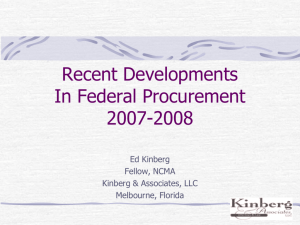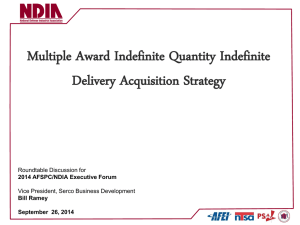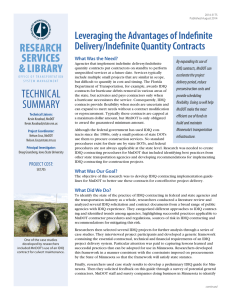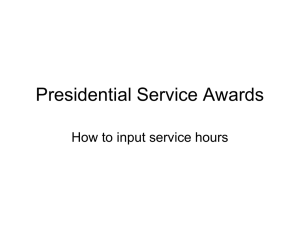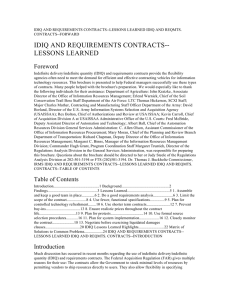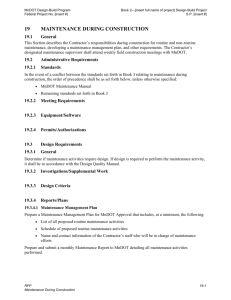Presentation Materials
advertisement
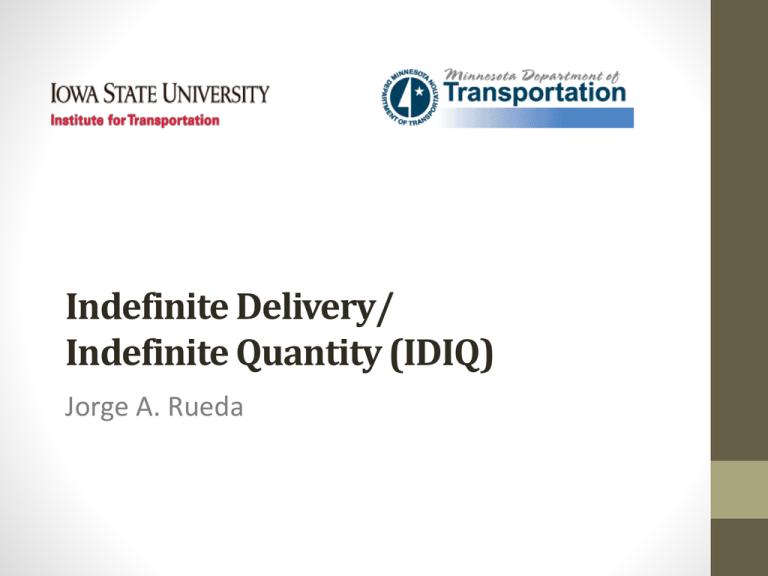
Indefinite Delivery/ Indefinite Quantity (IDIQ) Jorge A. Rueda IDIQ Terminology IDIQ Classification Single Work Order IDIQ Single contract awarded to single contractor. Once the need to issue the work arises, the contractor then performs the desired services or furnishes the requisite supplies. Single Award IDIQ Single contract awarded to single contractor who then is awarded work orders based on the pricing furnished in the initial bid package. Multiple Award IDIQ Single contract awarded to multiple contractors. Only those selected are subsequently allowed to bid on work orders. Decision Making Process Single Work Order Single Award Multiple Award Advantages - Lower use of in-house resources - Flexibility in quantity and delivery scheduling Supplies and services are ordered when needed Owners commit for a minimum or no amount of work Owners can direct shipments directly to users - Shorter project delivery period Contractor involvement in preconstruction activities Fast use of year-end funding Lower cost in future issuance of work orders Useful contracting option during emergencies Increase quality and timeliness of delivery - Reduce potential for graft and corruption Highly competitive Lower bid prices Larger participation of small and disadvantaged business Preference over single award contracts expressed by FAR Level 1 Level 2 Level 3 Disadvantages • Lack of knowledge and experience • Lower control over contract budget • High sensitivity to claims regarding inappropriate use of federal and/or state funds Conclusion • To select an IDIQ model MnDOT must consider the scope of the contract, the estimated amount of work to be ordered, and the capabilities of potential bidders. • MnDOT would find more benefits as they move from Single Work Order to Multiple Award Contracts, but it requires higher coordination and greater use of in-house resources. • MnDOT must design training programs to instruct contractors, consultants, and MnDOT staff about IDIQ contracting. • There must be a balance between the expected number of task orders to be issued and the number of awardees. QUESTIONS?
